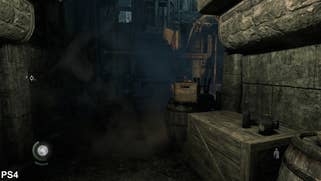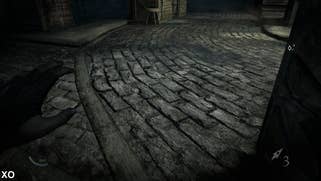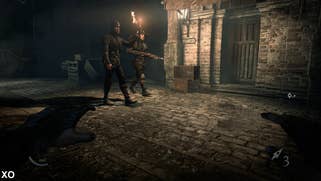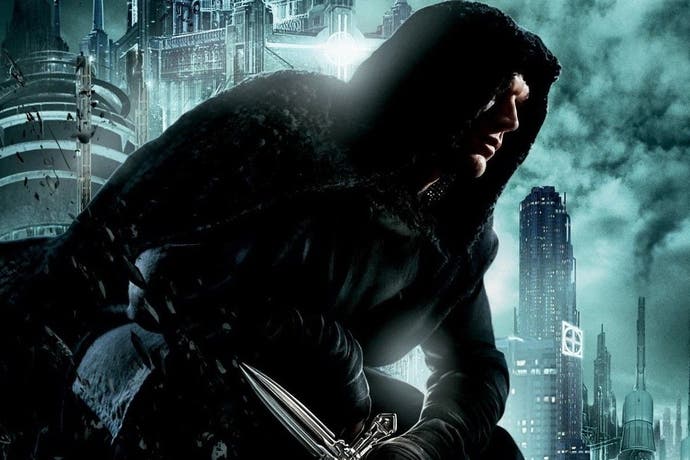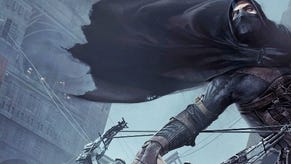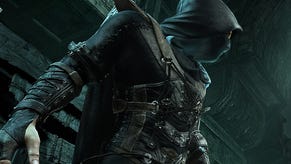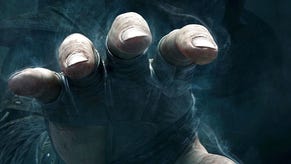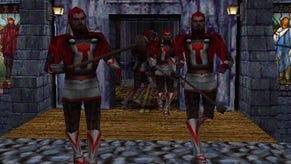Next-Gen Face-Off: Thief
Unreal Engine 3 comes to next-gen console with mixed results.
Better late than never, Eidos Montreal's rebooted Thief has been lying in wait since as early as 2008, where multiple redesigns and staff switch-ups have cast a shadow over its eventual quality. Our behind-doors preview of the game at E3 2013 showed a solid Unreal Engine 3 stealth title running at 1080p30 on PS4 - albeit with detailing and effects-work reminiscent of a last-gen title. But with the retail codes of Xbox One, PS4 and PC versions to hand, we see that this is the least of the game's problems.
In the spirit of openness among developers as of late, the studio has already declared in advance that the game is running at a full 1920x1080 on PS4, while the Microsoft next-gen release runs at 1600x900 - a state of affairs confirmed by our own pixel count. However, due to the use of high quality FXAA post-processing on both platforms, the dropped pixel tally isn't a major point of differentiation. Bird cages shimmer, while hair and fur shaders show up aliasing artefacts to a more notable degree on Xbox One in motion - but they are also an issue on PS4 and PC too. But for the rest of Garrett's clambering across The City, Thief's base image is neatly presented regardless of platform.
For a showcase of how close it gets, check out the extensive comparison gallery, and the videos below. We also put the next-gen versions side-by-side with the lead PC release on maximum settings, where the turnout is also very respectable. For perspective, the PC version runs here at 1080p with textures and shadows at very high, with extra tricks such as tessellation and parallax occlusion mapping (POM) enabled - plus FXAA and SSAA to treat any rough edges.
Eidos Montreal promises that the PS4 and Xbox One release retains all the bells and whistles of the PC at its best, and for the most part this is true. From world detail to lighting, the game's look is largely consistent across all three versions. But there's always something that goes amiss - and in this case it's the texture streaming. Compared to PC, we see the new consoles struggling to access some assets in quickly when first loading up areas, with normal maps and shadows popping in later on the Sony platform especially. Once loaded though, both versions tend to run without any hiccups.
"Xbox One's 900p resolution downgrade isn't as much of an issue as we thought it might be, while PS4's sub-par texture filtering comes as something of a surprise."
Alternative comparisons:
Sony's platform does run at a disadvantage in another regard though. Unlike the other versions, the PS4 uses trilinear filtering to treat floor and wall textures, creating a blur across far-away surfaces. It's a difference that sticks out when using the PC version's 16x anisotropic filtering, which itself is like-for-like with the clarity of the Xbox One release. Trilinear filtering is a cost-saving trick that suits games running at lower resolutions, where the tail-off in texture sharpness isn't so visible at a distance. For a game running at full 1080p though, Thief is doing itself a disservice here, and there's little to demonstrate why Sony's console can't compete with Microsoft's platform here.
Otherwise next-gen console owners get the full package. Both platforms benefit from POM, a procedural rendering technique that creates the effect of bumps and divots to more complex texture-work. For the brick patterning around the Crippled Burrick, this adds a strong sense of 3D definition that matches the PC - though there are some parts of the world that go untouched. PS4 and Xbox One owners also have screen space reflections enabled (fixed lights reflected in puddles and windows), plus the demanding tessellation option available on PC.
Our biggest grievance with Thief on consoles is not with its visual competence, but in the way it plays. Many players will notice frame-rate drops, but this in fact stems from an issue in frame-pacing. As seen with Need for Speed: Rivals (before it was patched), a game can average out at 30fps, but by displaying frames in an uneven, off-kilter pattern the motion of the image still appears far from smooth. In other words, a typical 30fps title outputs a unique frame followed by a duplicate, and repeats this sequence over and over, creating a consistent experience. In Thief's case, we get two or more unique frames in a row, followed by a matching number duplicate frames to average this out.

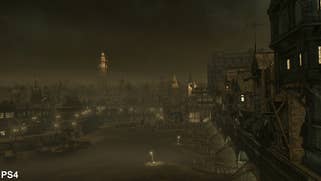
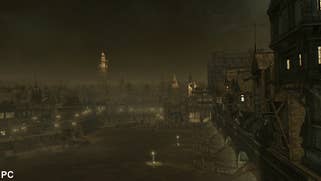

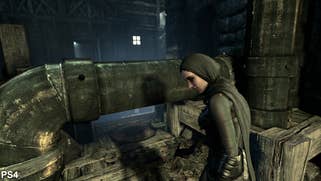


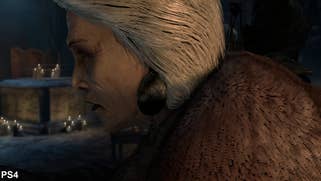
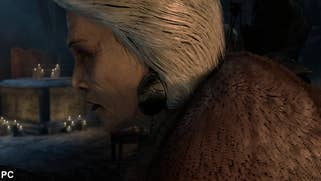


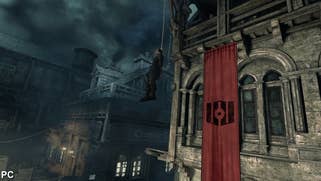
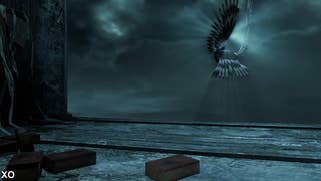

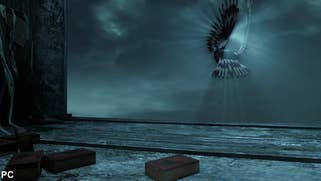
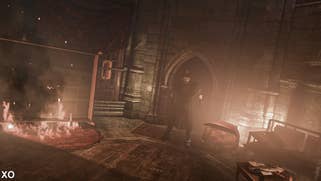


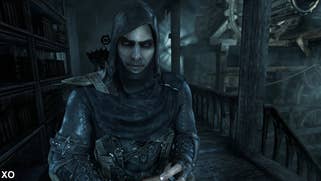

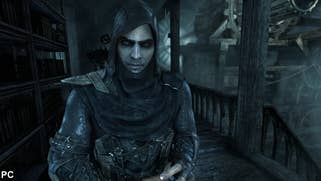
The phenomenon is shown in our videos by vibrato-style points in the 30fps line. However, more telling is the frame-time graph above it that tracks the amount of time each frame is on-screen, highlighting the actual impact this irregular motion has on controls. The expected turn-around for each frame on a 30fps game like Thief is 33ms, with no hitches. However, both Xbox One and PS4 succumb to stunning lows in response, with a nadir of 200ms as we move into new areas. We suspect that the background streaming code is the issue here.
Each version is guilty of genuine frame-rate drops too, especially when traversing main roads in The City. This manifests more aggressively on Microsoft's platform, where drops down to 20fps are possible, as compared to 25fps on PS4 - but in amongst the frame-pacing issues this is trivial. The stimulus seems to be interactions with multiple guards, and travelling at high speeds around the game world - neither of which are necessarily the core tenets of a stealth game. In either case, the PS4 version technically holds steadier at these particular stress points, but the end result still appears choppy.
As a frustrating aside, even the game's pre-rendered cut-scenes have performance issues. Drops down to the 25fps range are spotted on Sony's platform, whereas the Xbox One shows up with frame-pacing stutters. This is easy to pick out even on the reference PC version (where performance is otherwise 60fps), and is most likely a result of further inefficient background asset streaming. Fortunately, Thief's install directory on PC shows us that there are only six of these cut-scenes to worry about though.
In terms of PC-side performance, there's nothing to worry about where any gameplay is concerned. As expected for a game based on Unreal Engine 3, its scalability across a range of hardware is dependable, and hitting 1080p at 60fps with all settings maxed out proves no issue. Our test rig, equipped with an Intel i7-3770K clocked at 4.3GHz, 16GB of RAM and a GTX 780 Ti manages to hit this target easily enough - the only strain coming from the game's benchmark test, which drops us down to 50fps as we pass through heavily fortified city gates.
"Thief's 30fps target is generally met, but both Xbox One and PS4 version suffer from some genuinely poor frame-pacing issues, causing a lot of unwanted stutter."
It's a breath of fresh air coming from the choppy next-gen console releases. But of course, 1080p60 is expected of a higher-end rig, so what about more budget-orientated machines? Equipping the same PC with an older mid-range card such as the Radeon HD 7850, we can still hit the same refresh target with max settings. However, with tessellation enabled we catch drops to 45fps around affected character models; the simple solution for consistency being to switch this mode off.
Thief: the Digital Foundry verdict
If you've just bought a next-gen console, this Thief reboot is likely not your best choice for showing off its strengths. Visually, the PS4 should be the front-runner given its 1080p presentation, but through the virtues of effective anti-aliasing, the 900p frame-buffer used on Xbox One holds its own in practice. However, the PS4's weaker texture filtering does factor into the comparison more visibly, with assets appearing blurrier than they should at a distance, and asset pop-in proving slightly more evident. Given that all other settings are a match between next-gen platforms, the Xbox One release - surprisingly - stacks up favourable against a maxed-out PC playthrough.
Performance on PS4 and Xbox One counts as a bigger concern, and neither deserves any sort of recommendation here. Frankly, it feels unpleasant to control Garrett when moving with any haste - not due to frame-rate dips alone, but because of the pacing of these frames, leading to stuttering. We'd encourage buying the well-optimised PC version, as handled by port veterans Nixxes, over either of these next-gen releases as there are far fewer issues in this regard.
Of course, attempts have been made to tailor to these consoles' new control features, but none can truly compensate for their problems in motion. On PS4 the touchpad is used to navigate a 2x6 inventory grid, where sliding a finger over the right spot shifts the cursor, and clicking down selects. It takes some approximation, but it's intuitive, and feels like a worthy alternative to the traditional selection wheel used on Xbox One. Compared to gimmicks such as using the Kinect's microphone to alert guards, this stands out as a more practical use of a console's new control features.
All in all, it's hard not to be disappointed on a technical level with Thief. It's often our refrain, but in this case we'd strongly urge opting for the PC release if it's an option. If you're committed to buying for one next-gen platform or another, the superior texture filtering on Xbox One means it carries itself slightly better in the visual stakes - but frame-pacing aside, for the most part all three versions match up very closely indeed.
Update 2/3/14 17:45 GMT: On closer inspection, we see parallax occlusion mapping used sparingly on PS4 and PC in the The City hub area, which adds texture extrusions over the Xbox One release. For a majority of surfaces this effect is avoided entirely across all platforms, and for others it's subtle. The most notable contrast is to the centre road brick-work of Stonemarket, though texture quality is identical for any surfaces surrounding it. It's a curious point in favour of the PS4 version in a comparison that is already close - though as documented, its blurrier texture filtering is a trade-off that is worth considering. This is also a separate issue to tessellation - which is engaged on all platforms. We can also confirm both versions are fully installed before starting this test, as with all Face-Offs where the option is available. We hope this clears up any confusion.

